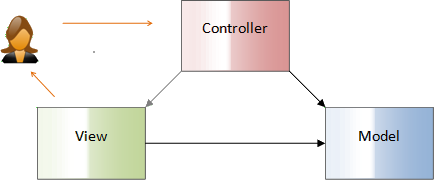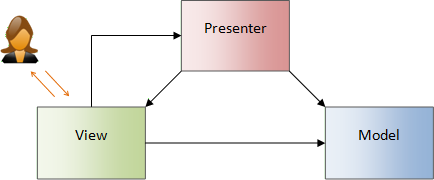MVC
From APIDesign
(→Summary) |
(→= Side note) |
||
| Line 38: | Line 38: | ||
| - | ===== Side note ==== | + | ===== Side note ===== |
One anonymous reader [[Talk:DCIAndLeakyAbstractions|likes to stress]] that [[Swing]] is not [[MVC]]. I am not sure if the reader agrees, but of course, [[Swing]] is [[MVP]]! | One anonymous reader [[Talk:DCIAndLeakyAbstractions|likes to stress]] that [[Swing]] is not [[MVC]]. I am not sure if the reader agrees, but of course, [[Swing]] is [[MVP]]! | ||
Revision as of 15:42, 4 November 2009
Model View Controller obsoleted (modernized) by DCI. In spite the MVC is found in almost every article and many technologies claim to adhere to its principles, there is a lot of confusion about its actual meaning and variations. Here is my own summary based on an excellent MVC Introduction article. Thanks for such great write up!
Contents |
Pattern Name
The first thing MVC stands for is name for a category of patterns that somehow separate the model from the rest. There are many things to do it, each of them suitable for different user interface. Each of such patterns however keeps model independent from the rest - e.g. model does not know anything about its presentation or business logic.
Classical MVC
Designed in 70ties. Strictly separates view and controller. The view can for example be a printer, the controller can be a punch card reader and interpreter. Obviously separating these two is easy. Not only they are physically independent, but also the delay between producing of output and receiving input can be significant. The whole idea can be illustrated as:
The user reads from the view and deals directly with the controller.
GUI in 80ties
As time moved on, the separation of printer and card reader got replaced by monitor with attached keyboard and mouse. Although these devices are still independent, they are usually close to each other and are manipulated by a single person simultaneously. To absorb this paradigm change, the MVC changed as well and resulted in a modified version called MVP:
Here the user deals with the view (like GUI button or text field) directly. The changes in the view propagate to presenter. Presenter is responsible for applying business logic, validating input data and updating the model. With rise of modern GUI the MVP almost completely displaced the original meaning of MVC and these two became almost synonyms.
Back to Basics
Ten years passed and web and HTML was invented. What this meant for MVC? Return to basics! The code that generates the HTML page is as separated from the GET/POST processing servlet as the printer was separated from the punch card reader. Thus we are back in the 70ties in the classical MVC age. When coding for web it makes sense to imagine the MVC with separated view and controller.
To MVP Again
Obviously, people tend to repeat the same thing again and again, just with new technologies. Thus with the rise of Ajax, where the GUI is represented inside a browser we are again closer to MVP as the user deals with the view elements directly.
Summary
First and foremost the MVC a name for a group of patterns that separate model from the rest. It comes with various flavors (more than I enumerated here), each differs in nuances and is targeted and more suitable to different implementation technologies.
MVC is likely to stay with us for a while. However its flavors or modifications will continue to grow. For example for modular applications it makes more sense to think in term of DCI.
Side note
One anonymous reader likes to stress that Swing is not MVC. I am not sure if the reader agrees, but of course, Swing is MVP!



